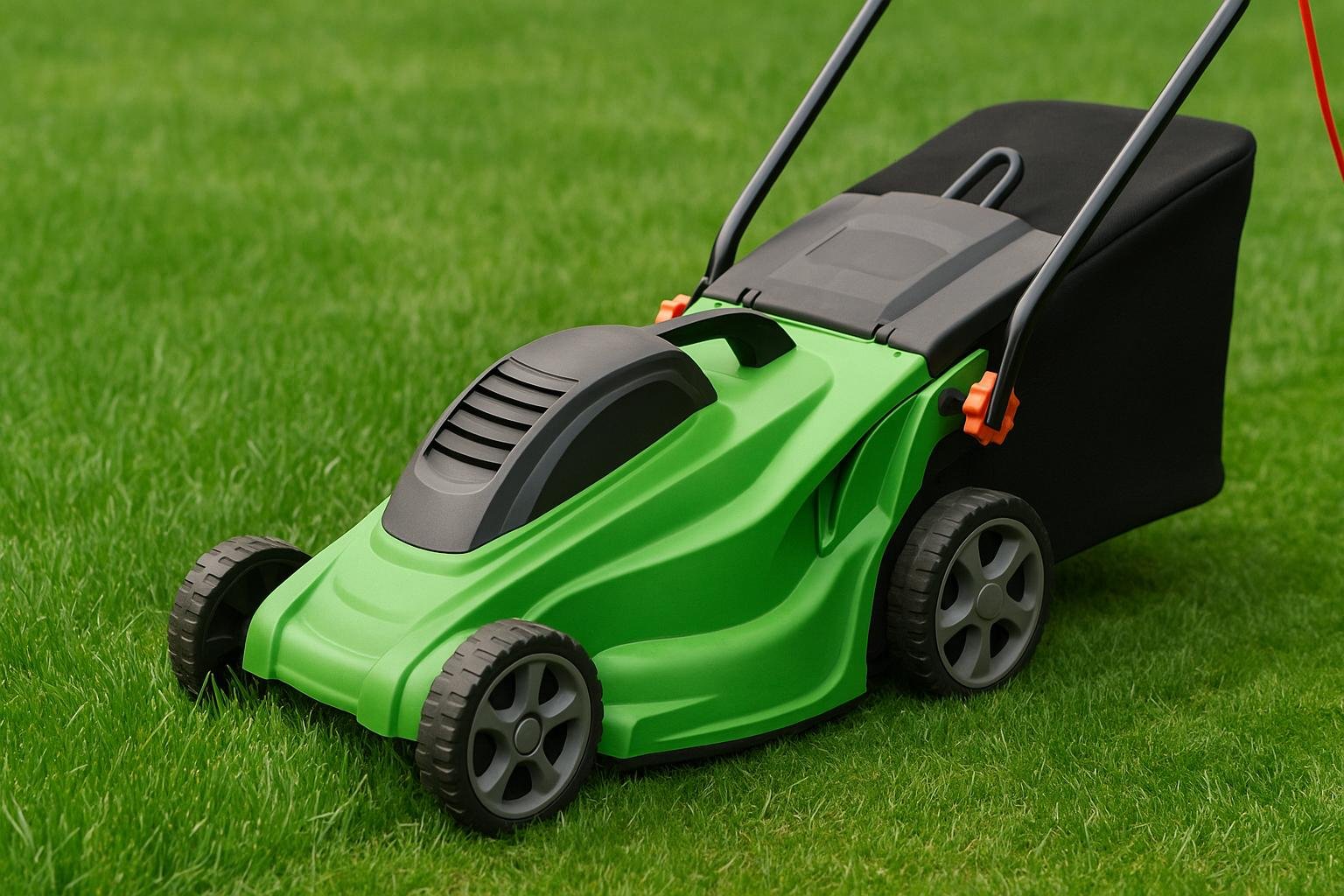Electric mowers are no longer just for urban gardeners with small lawns. They’ve evolved into powerful, environmentally-friendly machines that deliver cleaner cuts, quieter operation, and safer mowing experiences for residential and semi-professional users alike. As climate-conscious landscaping becomes a priority, electric mowers offer a compelling alternative to petrol-powered models.
Why Electric Mowers Are Gaining Ground Fast
A number of shifts in customer preferences, environmental restrictions, and technology improvements are driving the move towards electric garden tools.
Both corded and battery-powered electric mowers cut down on noise and pollutants while in use. They are especially popular in public parks, institutions, and suburban areas where safety and sound quality are important considerations.
Battery-powered mowers are now on par with fuel models in terms of performance without the upkeep required as lithium-ion technology becomes more widely available. Features like tool-free height adjustments, automatic shut-off, and push-button start appeal to users.
In practical terms, electric mowers simplify lawn maintenance for people who prefer convenience over engine maintenance. For those browsing options, a reliable starting point is to Shop Best Lawn Mower Machine selections online, where models are compared by efficiency, battery life, and safety features.
What Makes Electric Mowers Safer Than Fuel Mowers?
Many of the safety hazards connected to combustion engines are eliminated by electric mowers. No poisonous pollutants, heated engine parts, or flammable fuel are present. Child locks and automatic blade-stop features are also included in the majority of models.
Key safety benefits:
- Electric motors stay cooler during operation, reducing burn risks.
- Many models stop the blade instantly when the handle is released.
- Battery compartments are sealed and shock-resistant.
According to a 2023 report by the U.S. Consumer Product Safety Commission, over 80,000 mower-related injuries occur each year—many linked to recoil-starting, engine burns, or fuel mishandling. Electric mowers directly eliminate these hazards.
How Quiet Are Electric Lawn Mowers?
Electric mowers produce a lot less noise than their gasoline-powered counterparts. Most electric mowers run between 65 and 75 dB, however gas mowers can frequently reach 90 to 100 dB (like a motorcycle).
It’s quiet enough to mow in the early morning without disturbing the neighbours, and about the volume of a café talk. To put things in perspective, OSHA views extended exposure to noise levels higher than 85 dB as possibly harmful to hearing.
“It’s not just about cutting grass. It’s about preserving peace in your surroundings while doing it.” — Meera Shankar, urban gardener and community lawn care volunteer
This quieter operation makes electric mowers ideal for schools, clinics, gated societies, and farms where livestock might be sensitive to loud machinery.
Energy Efficiency and Running Costs
The cost of operation is one of the most notable benefits of electric lawn mowers. Depending on battery capacity and local electricity costs, a battery-powered model can operate for roughly ₹1 to ₹3 each full charge. On the other hand, refuelling petrol mowers might cost between ₹150 and ₹250.
While combustion engines lose a significant amount of energy to heat and friction, electric motors convert between 85 and 90 percent of their input energy into useful power. Without carburetors, spark plugs, or oil changes, the long-term savings can be significant.
Two performance points:
- Battery-powered mowers cover up to 500–600 square meters per charge on a 4Ah battery.
- Brushless motor technology in high-end models boosts energy conservation by up to 30%.
Many users combine their mower with solar-charged power banks or panels, turning lawn care into a zero-emission task.
Maintenance: Simple, Fast, and Cost-Effective
Electric mowers require less upkeep than gas-powered versions. There are no carburetor problems, air filters to clean, or engine oil to change. Usually, just occasional battery maintenance and blade sharpening are required.
Here’s a quick maintenance snapshot:
- Clean blades after each use to prevent corrosion.
- Recharge batteries before full discharge to extend lifespan.
- Store in a dry, shaded location to preserve electrical components.
The average maintenance cost of an electric mower over five years is 40–60% lower than for a combustion mower, according to data compiled by Consumer Reports.
Environmental Impact: Zero Emissions, Zero Compromise
Gas mowers contribute to air pollution and smog by releasing unburned hydrocarbons, nitrogen oxides, and carbon monoxide. Electric mowers, on the other hand, emit no exhaust emissions. They have almost little carbon footprint if they run on renewable energy.
Using a gasoline-powered mower for an hour produces the same amount of pollution as 150 kilometres of driving. The impact becomes substantial when you multiply that by the number of times it is used in communities each week.
Electric mowers support goals such as:
- Lower urban air pollution
- Reduced noise pollution in residential areas
- Sustainable farming and green landscaping
They’re also compliant with stricter emission standards already implemented in many regions and likely to be adopted worldwide.
Corded vs. Battery-Powered: Which One Is Right?
Each of the electric formats has advantages. With their endless runtime, corded mowers are perfect for little lawns where plugs are easily accessible. Complete mobility is offered by battery mowers, which are better suited for terrains with lots of obstacles or uneven surfaces.
Key differences:
| Feature | Corded Electric Mower | Battery-Powered Mower |
| Runtime | Unlimited | 30–90 minutes |
| Mobility | Limited by cord length | Full mobility |
| Maintenance | Very low | Low |
| Ideal Use | Lawns under 400 m² | Lawns 400–1000 m² |
| Charging Requirement | None | Requires recharging |
Choose based on lawn size, terrain complexity, and your access to power sources.
Real-World Use Cases: Why People Switch to Electric
- Suburban households looking for noise-friendly lawn care
- Organic farms needing a clean cut without fuel residue near crops
- Retired gardeners preferring lightweight, push-button models
- Institutional groundskeepers working around students or patients
After switching to electric lawn mowers from gas ones, one Pune urban school reported a 50% decrease in noise complaints from the neighbourhood.
One more benefit? Weight. The majority of electric lawn mowers are 25–35% lighter than their fuel-powered counterparts, which improves control and lessens strai
FAQs
- Can electric mowers handle tall or wet grass?
Yes, but choose higher-torque models. Blade sharpness and mowing speed also impact performance. - How long do electric mower batteries last?
On average, 3–5 years depending on use and charging habits. - Are spare parts easy to find?
Most brands offer blades, batteries, and wheels through authorized retailers or online. - Is a self-propelled electric mower available?
Yes. Premium battery models often include variable-speed, self-propulsion features. - What happens if it rains while mowing?
Electric mowers should not be used on wet grass or during rainfall to avoid shock hazards or motor damage.
Integration with Sustainable Gardening Practices
Electric mowers align well with eco-conscious gardening techniques such as:
- Mulching: Many electric models come with mulching kits to return clippings to the soil.
- Composting: Clippings collected from chemical-free lawns can go directly into compost bins.
- No-dig gardening: Clean-cut layers help maintain structured soil beds.
A low-impact, high-efficiency garden ecosystem can be achieved by combining these devices with rainwater collection, native planting, and organic pest management.
In an effort to cut emissions collectively, several community gardens have begun sharing battery-operated lawn mowers; this practice is becoming more popular in nations that have community-supported agricultural programmes.
What to Look for When Buying an Electric Mower
When choosing the right model, prioritize:
- Cutting width: Wider decks cover more ground quickly.
- Battery capacity: Measured in Ah, larger batteries support longer run times.
- Blade type: Steel blades offer better durability than plastic ones.
- Foldability: Easy storage, especially in compact homes or farm sheds.
Digital screens, cruise control, and smart sensors to measure load resistance or grass height are all features of contemporary models.
Some even combine electric mowers with robotic lawn systems or solar-powered weed eaters for farms or larger estates that care for both crops and turf.
Evolving Technology and the Future of Electric Mowing
Innovation continues to drive electric mowing forward. Expect developments in:
- Smart integration with lawn care apps and scheduling systems
- Lighter but more powerful batteries using solid-state technology
- Quieter motors and better vibration absorption
- Autonomous navigation systems for robotic units
Manufacturers are investing in AI-guided mowing that optimizes routes, avoids obstacles, and adjusts cutting speeds—already seen in experimental prototypes across Europe.
As cities explore green infrastructure, even public maintenance fleets are moving to electric landscaping equipment. This aligns with climate pledges and sustainable procurement goals.
Check out more on todayigosolar.com



